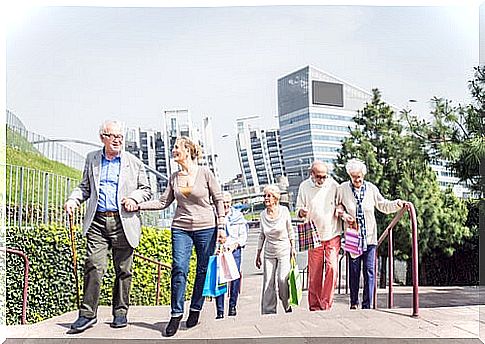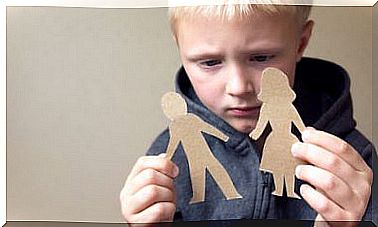Age Friendly Cities, Cities Designed For Well-being

Human beings develop through various factors. One of them is the environment, which is crucial for our interaction and which is related to our thoughts, emotions and behaviors. At present, a new city model is becoming fashionable, it is age friendly cities .
The term comes from English. Translating it into Spanish it would be “elderly friendly cities”. They consist of spaces that promote the improvement of the environments in favor of the people who inhabit them, regardless of age.
So, these types of cities work with older people so that they have more opportunities to develop and contribute to the communities, regardless of the year they were born. Thus, they promote dignity and autonomy. In addition, they encourage older people to participate in the day to day and not be discriminated against and stay safe.
To do this, we intervene in the environments so that they are adapted to the elderly. Why? On the one hand, since most of the spaces are not conducive to these ages, which encourages these people not to continue developing and their participation is limited in the communities. On the other hand, because we are all going to reach that age, then, an environment adapted to people with the most difficulties is a suitable environment for everyone.

Examples of age friendly cities
There are several age-friendly city projects underway ; for example, in the United States, where the population of retirees is growing more and more. There are places, like The Villages (Florida) that function as a network of villages that have the appropriate infrastructures for the elderly, can you imagine a 145-kilometer network that includes people of these ages?
Malta would be an example of an age friendly nation. Make sure that there is a participation of the elderly because it is not only that the spaces are favorable, but also to promote the healthy. For this, in this country the following is taken into account:
- Participation in the labor and social market.
- The importance of independence and autonomy, creating a friendlier environment for people with more difficulties.
- Communities sensitized with problems such as dementia, giving a special service to this population.
- Adopting measures in favor and compensation of mental health.
In addition, age fiendly cities promote inclusive urban development. Thus, all or most of the groups will be able to interact in a city that meets their needs.
Why do they have to do with our well-being?
Age friendly cities are also called “ age inclusive ” or age-inclusive cities. They promote the well-being of all, since in a community in which everyone acquires a value, there will be an environment that encourages joint development. Then, we all participate, which is why we would be promoting the establishment of links, which is essential for our social health.
On the other hand, by generating a positive impact on our emotions, because our close elderly people or we are included, we are promoting greater affective health, fantastic! We do not want to say that it is the only thing we need on an emotional level, but it is a pro for that part of our well-being.
In addition, age-friendly cities have a strong commitment to disease prevention and health promotion. Which implies that we expand our consciousness and seek the best for our health, this promotes a higher quality of life.
In fact, there is research that encourages diagnostic evaluation to assess the degree of adaptation of cities to older people. For example, Expósito Miralles, Martínez Sánchez, Munteanu Munteanu and Caballer Miedes (2017), make a review of this matter in the city of Castellón.

How to promote age friendly cities ?
The idea of an age-friendly city commits us all. We can promote this idea in different sectors:
- Labor. Change the way we see work, in order to integrate older people and have new opportunities in this area.
- Educational. To learn more about how to develop assertively to promote our well-being.
- Economic. For age-friendly cities to be possible, there must be a change in the economic system that fosters them.
- Political. In order to include policies that promote these types of cities, that protect the elderly and that meet their needs.
- Urbano. Develop spaces that promote integration.
It is a job with many to-dos to cope with an ever-growing population. However, the World Health Organization (WHO) monitors these types of cities, and provides official documents that guide or direct the creation of these spaces in an efficient way. For example, in his guide “ age friendly cities ”, he encourages the participation of cities so that they become facilitators of facilitating environments for people with more difficulties.
In short, age-friendly cities, derived from the increase in our life expectancy, are increasingly necessary. On the other hand, each of us can contribute, as part of the cities, so that there are more and more age-frienly cities.
It is not only about the absence of physical or mental obstacles, but also that the population is able to make an effort to help people in need.









